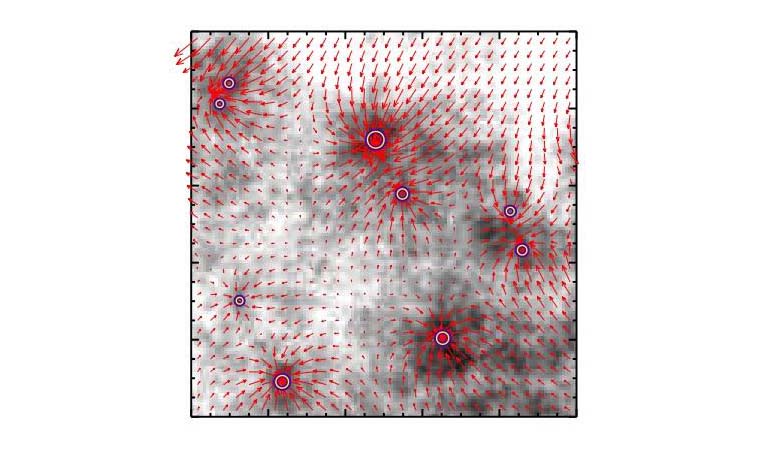A graduate student at the University of Michigan, along with his supervisor, have for the first time used a method known as network science to solve the initial mass function – a fundamental prediction in stellar formation theories, that has captured the attention of astronomers for over fifty years.
The initial mass function (IMF) is an empirical description of the distribution of masses of newly formed stars and is often assumed to have a simple power law found by Edwin Saltpeter in 1955. He demonstrated that the number of stars in each mass range decreases rapidly with increasing mass, so for example, using his power law he found that stars ten times as massive as our Sun are 220 times less frequent in a stellar cluster.
The use of this power law has far-reaching implications into many branches of astronomy as the distribution of stellar masses affects the evolution of stellar clusters. If you want to understand galaxy formation, which consequently has implications for large-scale structures in the Universe, then you need to know about the stars within them and you can’t make assumptions about a stars mass on an individual basis. Not only are low mass stars too faint to observe at large distances, but the stars we do see have already aged and therefore little is known about their initial mass.
Now, however, Andrei Klishin, under the supervision of Igor Chilingarian, a researcher at Sternberg Astronomical Institute, Moscow State University and Smithsonian Astrophysical Observatory, have solved this problem by using a method known as network science which studies properties of networks as mathematical objects, regardless of the specific system interpreted as a network. "Such methods have been used across different research fields, from sociology and information science to molecular biology, but never before in astrophysics,” says Chilingarian.
Network science considers distinct elements represented by nodes and the connections between the elements as links. To solve the IMF, Chilingarian and Klishin described a system of proto-stars as a spatial network where links are gravitational forces acting between molecular dense cores that will later form stars. In addition, the network is grown by the principle of preferential attachment, whereby a node having many links creates new links even faster.
"We demonstrated that a power law that the stellar initial mass function follows is formed independently of the initial mass distribution of proto-stars if the density distribution in the interstellar cloud is fractal. This fractal distribution directly follows from the classical theory of turbulence developed by the Soviet mathematician Andrey Kolmogorov. We encounter fractal, or self-similar objects on a daily basis. Among others, clouds in Earth's atmosphere, snowflakes and even some fruits and vegetables such as cauliflower or broccoli all have fractal properties,” explains Chilingarian.
The team were able to complete their studies using just eight equations, which did not invoke any extra free parameters required my many existing star formation theories or any unjustified assumptions. “This area of physics deals with the aspects of systems of large number of particles where particular details regarding individual particles become unimportant. We know, that the same Salpeter power law exponent of -2.35 was measured in many star clusters of different ages, metallicities and total masses. This suggests that the value is determined not by some local properties of a specific cluster, but rather by some more general principle. That's why when we introduce the principle of preferential attachment in our paper, we refer to works in network science, bibliometrics, biological speciation. In all those very different systems the statistical properties turn out to be very similar,” said Klishin.
This work is the first of its kind for solving astrophysical problems and the duo hope to further develop methods and use them to analyse a broad range of phenomena, including studying the large scale structure of the matter distribution in the Universe.











